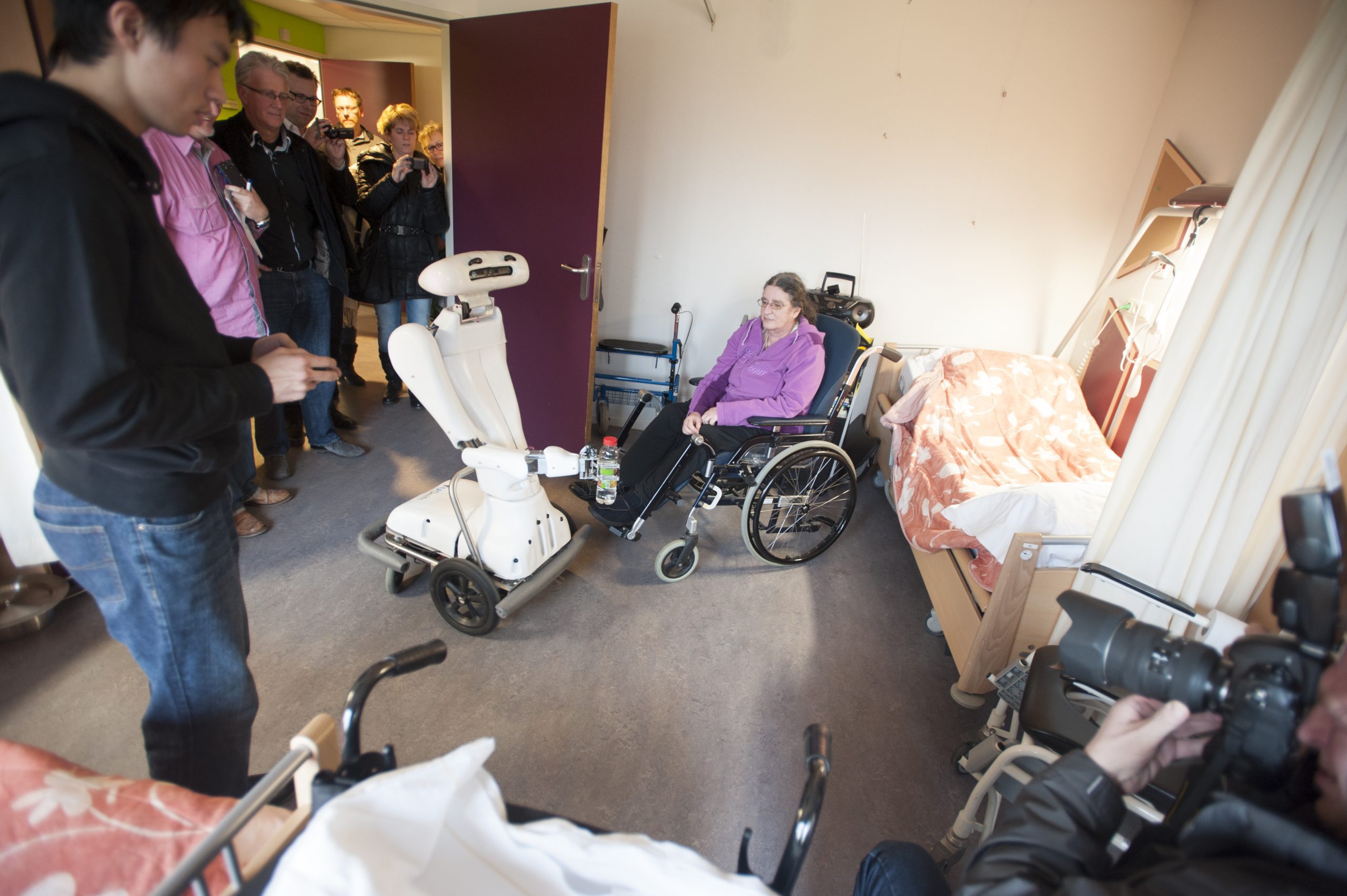The focus of the newly launched TU Delft Robotics Institute lies with robots that interact with people, such as robotic aids in nursing homes. What do elderly, nurses and medics think of this?
“Ah, look, there is Linda”, says one of the receptionists at the nursing home of Viva Zorggroep in Heemskerk. “No, Eva is her name”, her colleague corrects. “Thanks to her we will soon be unemployed”, she adds while laughing. As soon as Eva enters the nursing home, she is the centre of attention.
Dr.ir. Joost Broekens, of the section interactive intelligence (EEMCS faculty) presented Eva to the elderly and nurses a few weeks ago, a robot built in 2012 by students of the robotics minor course. It was the first time that a Delft robot was presented to a nursing home.
“She could carry my clothes to the bathroom when I’m taking a shower. Very handy such a robot”, says a lady in a wheelchair who is riding along with Eva through the corridors. A 73 year old lady eating her lunch in the canteen agrees. “Human contact is important, but with the aging of the population in this country we are bound to use robots in the future to help put our clothes on or to pick up the mail.”
No medical tasks
During a group discussion held later that day with employees and inhabitants it was agreed upon that it would not be a good idea to have the robot perform medical tasks, at least not in the near future. Eva will thus not be handling injection needles, that much is clear. Lively discussions were held about whether tasks such as feeding people, helping them with revalidation exercises, washing patients and measuring blood pressure could and should be performed by robots. “Maybe the robot can offer room service”, one employee suggests. “Eva can go and fetch a croquette for someone who has to stay in bed.” “Or maybe Eva can hold hands of people who have panic attacks at night and can’t sleep”, another colleague suggests. Not everybody is happy with that last idea.
“All tasks that need human interpretation should always be performed by people” one of the attending doctors stated which pretty much concluded the whole discussion. Broukens is very much interested in hearing all these opinions. At the end of 2013, as a test case, an improved version of Eva will stroll through the building for a week accompanying people to their room and performing other simple tasks. It is important for the researcher to know what the needs and wishes are of the target group.
Next on the program was a demonstration of Eva’s competence, or better, Eva’s future capabilities. The robots’ specialty for now is serving drinks. You can ask her to pick up a bottle of soda from a table and bring it to you.
Yet for her to be able to do so autonomously she must be preprogrammed to recognize the exact setting. There was no time to organize that in the short time span and so Wilson Ko, one of the students who devised Eva, used the remote control to have Eva serve drinks.
Marcel Laan, IT-manager of the nursing home, who invited the Delft researchers, is not disappointed. “Eva isn’t really capable of doing anything”, he says. “This technology still needs a lot of work. We have always been interested in new technologies and we are thrilled to be at the forefront of these developments in robotics.”
During an earlier conversation, Laan said that his employer had already purchased several robots for therapeutic use called Paro, which come in the shape of a cuddly seal and are a comfort to people suffering from dementia.
Last but not least, Eva has to show that she is able to follow a person. During the demonstration however she seems to become enraged. At full speed, she heads towards a woman strolling by with a walker. Broekens and Ko laugh when asked what caused this fury. Ko explains that a pattern recognizer in the robot switched over to another moving object when the strolling lady came into its sight.



Comments are closed.